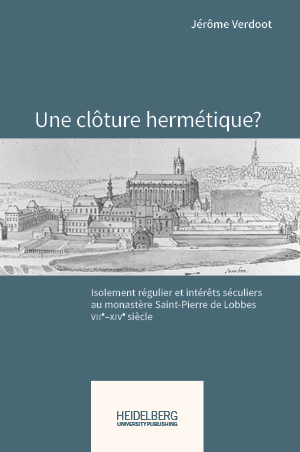Verdoot, Jérôme
Une clôture hermétique? Isolement régulier et intérêts séculiers au monastère Saint-Pierre de Lobbes, VIIe–XIVe siècle
Au Moyen Âge, les abbayes bénédictines justifiaient leur existence par leur isolement, prétention affirmée à travers, notamment, le topos du locus desertus montrant des saints fondateurs d’abbayes s’installer loin de toute civilisation. Or, pour subsister, les abbayes devaient retirer des biens ou des services de la société englobante (oblats, nourriture, protection…) et, en échange, en fournir d’autres (soutien politique, hospitalité…). Les monastères médiévaux étaient donc profondément intégrés dans la société tout en prétendant en être isolés. Ce paradoxe de la vie monastique est souvent utilisé dans les Ordensforschungen, bien plus rarement pour l’étude d’institutions spécifiques. Le présent ouvrage a pour objectif de confronter ce cadre théorique à la réalité vécue par les moines de l’abbaye Saint-Pierre de Lobbes (Hainaut, Belgique), du viie siècle, date de sa fondation, jusqu’à la fin du xive.
In the Middle Ages, the very existence of Benedictine monasteries was based on their proclaimed isolation from the world, a tenet diametrically opposed to their means of subsistence. Indeed, in order to extract goods from society (oblates, food, protection…), abbeys had to provide tangible goods and services in exchange (political support, hospitality…); monasteries were deeply integrated into medieval society while claiming to be isolated from it. This paradox of monastic life is often referred to in the Ordenforschungen or study of the monastic orders, but it is rarely used when it comes to studying specific institutions. This book aims to test the validity of this theoretical framework against the reality as lived by the monks of the Abbey of St Peter of Lobbes (Hainault, Belgium), from its founding until the turn of the 14th and 15th centuries. In particular, it analyses the interactions between the abbey and its political and economic environment.




